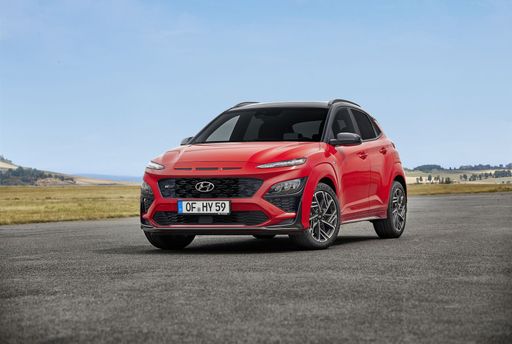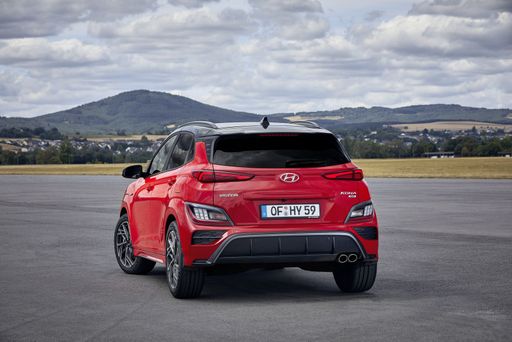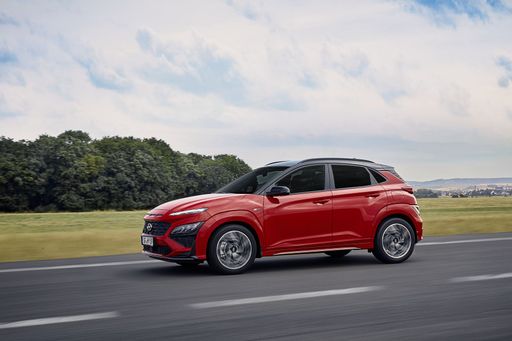Hyundai Kona vs SERES 3 – Which model is better for everyday use?
Both models have their strengths – but which one suits you more?
Compare performance, efficiency, price and space directly: Hyundai Kona or SERES 3?
Here’s where it gets real: The technical differences in detail
Costs and Efficiency: Price and efficiency are often the first things buyers look at. Here it becomes clear which model has the long-term edge – whether at the pump, the plug, or in purchase price.
Hyundai Kona has a visibly advantage in terms of price – it starts at 23100 £, while the SERES 3 costs 31600 £. That’s a price difference of around 8580 £.
In terms of energy consumption, the advantage goes to the Hyundai Kona: with 14.60 kWh per 100 km, it’s clearly more efficient than the SERES 3 with 18 kWh. That’s a difference of about 3.40 kWh.
As for range, the Hyundai Kona performs strongly better – achieving up to 514 km, about 213 km more than the SERES 3.
Engine and Performance: Power, torque and acceleration say a lot about how a car feels on the road. This is where you see which model delivers more driving dynamics.
When it comes to engine power, the Hyundai Kona has a clearly edge – offering 218 HP compared to 163 HP. That’s roughly 55 HP more horsepower.
In acceleration from 0 to 100 km/h, the Hyundai Kona is noticeably quicker – completing the sprint in 7.80 s, while the SERES 3 takes 9.90 s. That’s about 2.10 s faster.
In terms of top speed, the Hyundai Kona performs clearly better – reaching 210 km/h, while the SERES 3 tops out at 155 km/h. The difference is around 55 km/h.
There’s also a difference in torque: the SERES 3 pulls somewhat stronger with 300 Nm compared to 265 Nm. That’s about 35 Nm difference.
Space and Everyday Use: Beyond pure performance, interior space and usability matter most in daily life. This is where you see which car is more practical and versatile.
Both vehicles offer seating for 5 people.
In curb weight, the Hyundai Kona is visibly lighter – 1370 kg compared to 1765 kg. The difference is around 395 kg.
In terms of boot space, the Hyundai Kona offers strongly more room – 466 L compared to 0 L. That’s a difference of about 466 L.
When it comes to payload, Hyundai Kona visibly takes the win – 490 kg compared to 300 kg. That’s a difference of about 190 kg.
All in all, the Hyundai Kona shows itself to be leaves its rival little chance and secures the title of DriveDuel Champion.
It impresses with the more balanced overall package and proves to be the more versatile companion for everyday use.
Hyundai Kona
The Hyundai Kona blends a bold design with a versatile interior, making it a standout choice in the compact SUV market. Its crisp handling and responsive steering provide an engaging driving experience, whether in the city or on the open road. The vehicle also offers a range of features designed to enhance comfort and connectivity, ensuring a pleasurable journey for both driver and passengers.
details @ hyundai.news
@ hyundai.news
 @ hyundai.news
@ hyundai.news
 @ hyundai.news
@ hyundai.news
 @ hyundai.news
@ hyundai.news
SERES 3
The SERES 3 marks an intriguing entry into the electric vehicle market, distinguished by its sleek design and advanced technology features. This compact SUV offers a commendable driving experience with its smooth handling and quick acceleration, making it a strong contender in urban environments. Additionally, the SERES 3 boasts a well-equipped interior, providing both comfort and connectivity for modern drivers.
details

|
|
|
|
|
Costs and Consumption |
|
|---|---|
|
Price
23100 - 41600 £
|
Price
31600 £
|
|
Consumption L/100km
4.6 - 7 L
|
Consumption L/100km
-
|
|
Consumption kWh/100km
14.6 - 16.8 kWh
|
Consumption kWh/100km
18 kWh
|
|
Electric Range
377 - 514 km
|
Electric Range
301 km
|
|
Battery Capacity
1.3 - 65.4 kWh
|
Battery Capacity
-
|
|
co2
0 - 163 g/km
|
co2
0 g/km
|
|
Fuel tank capacity
38 - 47 L
|
Fuel tank capacity
-
|
Dimensions and Body |
|
|---|---|
|
Body Type
SUV
|
Body Type
SUV
|
|
Seats
5
|
Seats
5
|
|
Doors
5
|
Doors
5
|
|
Curb weight
1370 - 1773 kg
|
Curb weight
1765 kg
|
|
Trunk capacity
466 L
|
Trunk capacity
0 L
|
|
Length
4350 - 4385 mm
|
Length
4385 mm
|
|
Width
1825 mm
|
Width
1850 mm
|
|
Height
1580 - 1585 mm
|
Height
1650 mm
|
|
Max trunk capacity
1300 L
|
Max trunk capacity
-
|
|
Payload
420 - 490 kg
|
Payload
300 kg
|
Engine and Performance |
|
|---|---|
|
Engine Type
Electric, Petrol, Full Hybrid
|
Engine Type
Electric
|
|
Transmission
Automatic, Manuel
|
Transmission
Automatic
|
|
Transmission Detail
Manual Gearbox, Dual-Clutch Automatic
|
Transmission Detail
Reduction Gearbox
|
|
Drive Type
Front-Wheel Drive, All-Wheel Drive
|
Drive Type
Front-Wheel Drive
|
|
Power HP
115 - 218 HP
|
Power HP
163 HP
|
|
Acceleration 0-100km/h
7.8 - 11.9 s
|
Acceleration 0-100km/h
9.90 s
|
|
Max Speed
162 - 210 km/h
|
Max Speed
155 km/h
|
|
Torque
200 - 265 Nm
|
Torque
300 Nm
|
|
Number of Cylinders
3 - 4
|
Number of Cylinders
-
|
|
Power kW
85 - 160 kW
|
Power kW
120 kW
|
|
Engine capacity
998 - 1598 cm3
|
Engine capacity
-
|
General |
|
|---|---|
|
Model Year
2024 - 2025
|
Model Year
2020
|
|
CO2 Efficiency Class
A, D, C, E, F
|
CO2 Efficiency Class
A
|
|
Brand
Hyundai
|
Brand
SERES
|
Is the Hyundai Kona offered with different drivetrains?
Available configurations include Front-Wheel Drive or All-Wheel Drive.
The prices and data displayed are estimates based on German list prices and may vary by country. This information is not legally binding.
